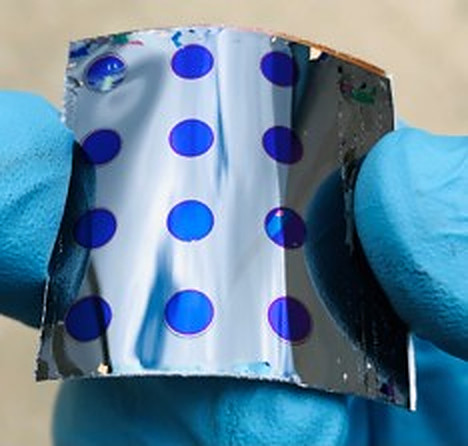From pv magazine global
Researchers at the University of Toledo in the United States have developed a flexible CdTe solar cell through a water-assisted lift-off approach, including an additional cadmium chloride treatment for the cell’s cadmium sulfide (CdS) film.
“These are lightweight and flexible solar cells that can especially install on any curve surface or electric device and, most importantly, they are good for space applications,” researcher Sandip Singh told pv magazine.
The scientists described the water-assisted lift-off method as a low-cost fabrication process to offer advantages such as lower stress in CdTe films and ambient operation temperature. The lift-off approach consists of different photolithography techniques for creating a photoresist profile that ensures separation between the thin film coating in desired and undesired areas of a give pattern. It includes washing away the photoresist to leave behind the film in the patterned area.
They used cleaved mica sheets as a mediator substrate for the solar cell and a CdS buffer layer with thickness of 100 nm. They also applied a cadmium chloride (CdCl2) vapor treatment to the cadmium sulfide (CdS) film before CdTe deposition and a second CdCl2 treatment after CdTe deposition.
“A 3.5 μm CdTe absorber layer was deposited by the closed space sublimation method with a source temperature of 580 C and a substrate temperature of 520 C in a 1% oxygen and 99% argon environment,” they explained.
The academics dried the peeled film with a nitrogen jet and deposited a transparent conduction oxide indium zinc oxide (IZO) layer as a front contact.
“In this process, the mica sheet serves only to grow CdS and CdTe films, after the delamination mica sheet is not a part of the solar cell,” they said.
They said the process results in a higher cristallinity of the films. They found that the average grain size of the CdS film without additional CdCl2 treatment is much smaller than that with additional CdCl2 treatment. This means that the CdS film has a higher conductivity.
Tested under standard illumination conditions, the cell achieved a power conversion efficiency of 12.60%, an open-circuit voltage of 0.829 V, a short-circuit current density of 23.64 mA/cm2, and a fill factor of 64.30%. The group described this efficiency value as highest reported among all flexible CdTe solar cells fabricated by the lift-off technique.
“The additional CdCl2 treatment on the CdS layer significantly improves the open-circuit voltage and fill while the improvement of short-circuit current density is negligible,” the researchers said. They described the novel cell technology in “Water-Assisted Lift-Off Process for Flexible CdTe Solar Cells,” which was recently published in ACS Publications.
This content is protected by copyright and may not be reused. If you want to cooperate with us and would like to reuse some of our content, please contact: editors@pv-magazine.com.









By submitting this form you agree to pv magazine using your data for the purposes of publishing your comment.
Your personal data will only be disclosed or otherwise transmitted to third parties for the purposes of spam filtering or if this is necessary for technical maintenance of the website. Any other transfer to third parties will not take place unless this is justified on the basis of applicable data protection regulations or if pv magazine is legally obliged to do so.
You may revoke this consent at any time with effect for the future, in which case your personal data will be deleted immediately. Otherwise, your data will be deleted if pv magazine has processed your request or the purpose of data storage is fulfilled.
Further information on data privacy can be found in our Data Protection Policy.